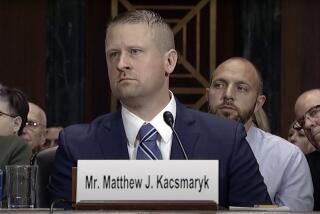Giuliani’s adoption fallacy
- Share via
Striving to find the “middle ground” on abortion -- that is, coming up with ways acceptable to pro-choice and pro-life Americans alike to reduce the number of abortions in the United States -- is a worthwhile undertaking. But it also has given rise to some fairly resilient myths about the best way to achieve this goal.
Republican presidential candidate Rudy Giuliani prominently featured one such myth in his speech Oct. 20 to a group of social conservatives. The former New York City mayor stated that “we increased adoption by 133% over the eight years before I came into office. And we found that abortions went down by 18% during that period of time. I believe we can do that in the United States.”
But Giuliani’s implied causality between these two statistics is unsupportable for this simple reason: The increases he cites were in the rate of adoptions of children out of New York City’s foster care system, not in the rate at which women were continuing unwanted pregnancies and placing their infants for adoption rather than having abortions. Nothing in the data he cites indicates that there was any significant increase in the city’s newborn relinquishment rate while he was mayor.
Giuliani is not alone in misrepresenting the adoption-abortion link in this way. Politicians from both parties frequently promote tax credits and other incentives to ease the way for adoptive parents to demonstrate that they want to “do something” about abortion. Facilitating adoptions, especially of hard-to-place children, deserves our strong support. But it does nothing to affect the abortion rate. To assert that it does is either ill-informed or simply cynical, and it should stop.
Meanwhile, we know that very few women actually place their infants for adoption. In the United States, fewer than 14,000 newborns were voluntarily relinquished in 2003 (the latest year for which an estimate is available), according to the U.S. Department of Health and Human Services. That proportion -- just under 1% of all the children born to never-married women -- has remained constant for almost two decades. It’s down considerably from the early 1970s, but even in those days, more than nine in 10 unmarried women who gave birth kept their babies.
The 2003 infant relinquishment figure is minuscule when compared to the almost 1.3 million abortions that took place that year. And even then, it would be wrong to assume that every one of those relinquishments actually averted an abortion. Many women placing their baby for adoption may never have considered abortion in the first place.
Among the main explanations cited in the HHS report for decline in relinquishments since the ‘70s are that “the increased social acceptance of single parenthood has led more unmarried women to keep their children” and that “a higher proportion of unmarried mothers are in their 20s rather than their teens, so the personal and financial stresses may not be as great as in the past.” More important, the researchers do not consider abortion to be a significant factor and suggest that “the decline in abortion rates shows that the decline in relinquishment is not a result of increasing selection of abortion over relinquishment.”
Politicians of all stripes, and whatever their position on abortion, should face reality. Increasing the rate of completed adoptions, however valid on its own merits, is irrelevant to the abortion rate. And increasing the rate of newborn relinquishments, even assuming it could be done in an ethically and socially acceptable way, at best would be tinkering at the margins. Even if relinquishments doubled, and each one of them represented an averted abortion, it would make hardly a dent in the abortion rate.
In his recent speech, Giuliani did leave himself an opening to embrace evidence-based policies when he offered that he would “support any reasonable suggestion that promises to reduce the number of abortions.”
In fact, there are plenty of proven, common-sense policies that he (and all those who are still promoting adoption as a viable anti-abortion strategy) could support. Chief among them is to expand women’s access to high-quality contraceptive counseling and services and to support comprehensive sex education that teaches young people about both delaying sex and using protection when they do become sexually active.
As a just-published Guttmacher Institute study shows, abortion rates are extremely high in many countries where contraceptives are not readily available and contraceptive use is not encouraged, even though abortion is highly restricted in those places by law. And the world’s lowest rates of abortion by far are found in Western Europe, where very few legal restrictions are placed on abortion but contraceptive use and comprehensive sex education are widespread.
Behind virtually every abortion is an unintended pregnancy. The sooner politicians accept that the only way to meaningfully achieve fewer abortions is to do better in helping women and their partners prevent unintended pregnancies in the first place, the better.
More to Read
Get the L.A. Times Politics newsletter
Deeply reported insights into legislation, politics and policy from Sacramento, Washington and beyond. In your inbox three times per week.
You may occasionally receive promotional content from the Los Angeles Times.










